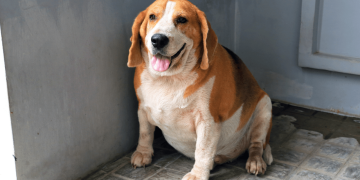Moving to a new home or introducing your pet to a new environment can be a stressful experience for both you and your furry friend. Pets, especially cats and dogs, are creatures of habit and thrive on routine. The unfamiliar sights, sounds, and smells in a new environment can cause anxiety, fear, and confusion. As a pet owner, it’s essential to understand how to help your pet adjust to their new surroundings in a way that minimizes stress and promotes a sense of security.
This article will explore some strategies and tips on how to ease your pet’s transition into a new environment, ensuring they feel safe and comfortable throughout the process.
1. Prepare a Safe and Quiet Space
One of the first steps in helping your pet adjust is to create a safe, quiet space in the new environment. This will serve as their “safe haven,” where they can retreat to when feeling overwhelmed or anxious. This space should be calm, secure, and free of excessive noise or activity, allowing your pet to feel at ease.
For Dogs:
- Set up a cozy bed, crate, or designated area with their favorite toys, blankets, or even an item that smells familiar to them (like a piece of your clothing).
- Keep the area free from disturbances, especially during the first few days of the move.
- If possible, limit the amount of time your dog spends in the new space during the first few days, gradually increasing their exposure to other areas of the house as they become more comfortable.
For Cats:
- Set up a similar area that includes a cozy hiding spot, litter box, food and water bowls, and a scratching post.
- Make sure to provide vertical spaces, such as shelves or cat trees, where your cat can climb and observe the surroundings from a safe distance.
- Allow your cat to explore the new space on their terms. Don’t force them to come out of their hiding spot too soon; let them adjust at their own pace.
2. Stick to Familiar Routines
Pets find comfort in routine. Keeping certain aspects of their daily schedule the same in the new environment can help ease the transition and reduce anxiety. Try to maintain consistency with feeding times, walks, playtime, and bedtime.
- Feeding: Serve meals at the same times and in the same manner (e.g., in their favorite bowl).
- Play and Exercise: Continue with your usual playtime and exercise routines, as this helps burn off excess energy and promotes relaxation.
- Sleep Schedule: Ensure your pet has a familiar sleeping area, and try to maintain their usual bedtime routines.
By sticking to familiar routines, your pet will feel a sense of normalcy despite being in a new environment.
3. Gradual Introduction to the New Space
When moving to a new home, especially if it involves an entirely new neighborhood, it’s crucial to introduce your pet to their new environment gradually. Sudden exposure to unfamiliar areas can be overwhelming, causing stress and anxiety.
For Dogs:
- Begin by allowing your dog to explore one room or area of the new home at a time. Gradually expand their exploration to the rest of the house over several days or even weeks.
- Take your dog on short walks around the new neighborhood, allowing them to get accustomed to new smells, sounds, and surroundings at their own pace. Always keep them on a leash, especially during the first few walks.
For Cats:
- Initially, confine your cat to one room, similar to their safe space. Let them explore this room thoroughly before slowly giving them access to the rest of the house.
- Give your cat time to adjust to the new smells, sights, and sounds before introducing them to new areas, particularly if there are other pets or people in the household.
4. Provide Familiar Scents and Objects
Your pet’s sense of smell is incredibly powerful and plays a significant role in their comfort. Bringing familiar items into the new space can help provide a sense of security and reduce anxiety.
- For Dogs and Cats: Bring their favorite toys, blankets, or bedding with you when you move. These items carry their scent, making them feel more at home in the new environment.
- For Cats: Consider using pheromone diffusers or sprays, such as Feliway, which release calming scents that mimic the natural pheromones cats produce to mark their territory.
- For Dogs: Use products like Adaptil, a pheromone diffuser for dogs, which can help reduce anxiety and promote relaxation.
Having these familiar smells around your pet will help reassure them that this new place is safe and welcoming.
5. Give Them Space to Explore on Their Own Terms
It’s important to allow your pet to explore their new home at their own pace. Overwhelming them with too much attention or forcing them to adjust quickly can increase anxiety. Be patient and let your pet set the pace for exploring new areas of the house.
For Dogs:
- Don’t rush your dog to meet new people or other pets. Let them take their time in getting to know everyone.
- Provide lots of positive reinforcement through treats and praise when your dog explores new areas or behaves calmly in the new environment.
For Cats:
- Cats are often more independent and may prefer to take things slow. Allow them to hide and come out when they feel ready. Forcing them out of hiding can cause stress and delay the adjustment process.
- Gently encourage exploration by offering treats or using toys to entice them into new areas. However, never force them into unfamiliar spaces.
6. Spend Quality Time Together
The most important thing you can do to help your pet adjust is to be there for them. Spend extra time with your pet, offering affection, play, and companionship. Pets can often sense when their owners are stressed or anxious, so it’s important for you to remain calm and reassuring as well.
For Dogs:
- Play interactive games, such as fetch or tug-of-war, to help them burn off energy and build confidence in their new surroundings.
- Spend quiet time petting and bonding with your dog, reinforcing their sense of safety and security.
For Cats:
- Engage in interactive play sessions using toys that stimulate their hunting instincts, like feather wands or laser pointers.
- Provide gentle petting and affection to help your cat feel loved and comforted during the transition.

7. Monitor Their Behavior for Signs of Stress
Keep an eye on your pet’s behavior, and be aware of any signs that they may be feeling stressed or overwhelmed. Common signs of anxiety in pets include:
- Excessive vocalization (barking, meowing)
- Destructive behavior (scratching, chewing)
- Loss of appetite
- Excessive grooming or licking
- Withdrawal or hiding
- Changes in bathroom habits (urinating outside the litter box or indoors)
If you notice any of these behaviors persisting over time, it may be a sign that your pet is struggling to adapt. In such cases, consider consulting with a veterinarian or a professional animal behaviorist who can provide guidance and recommendations on how to manage your pet’s anxiety.
8. Consider Professional Help if Necessary
Some pets, especially those with a history of trauma or anxiety, may need extra support in adjusting to a new environment. In such cases, seeking the help of a professional animal behaviorist or trainer can be highly beneficial. They can assess your pet’s behavior and offer personalized advice on how to reduce anxiety and make the transition smoother.
If your pet’s anxiety is severe, your veterinarian may also recommend calming medications or supplements to help manage stress during the transition period.
Conclusion
Helping your pet adjust to a new environment takes time, patience, and understanding. By providing them with a safe space, maintaining routines, offering familiar scents and objects, and spending quality time together, you can ease their anxiety and make the transition much smoother. Always pay attention to their behavior and be mindful of their needs, as each pet is unique and may adjust at their own pace. With the right support, your pet will soon feel comfortable and secure in their new home, and you’ll be able to enjoy a happy, harmonious life together.























































